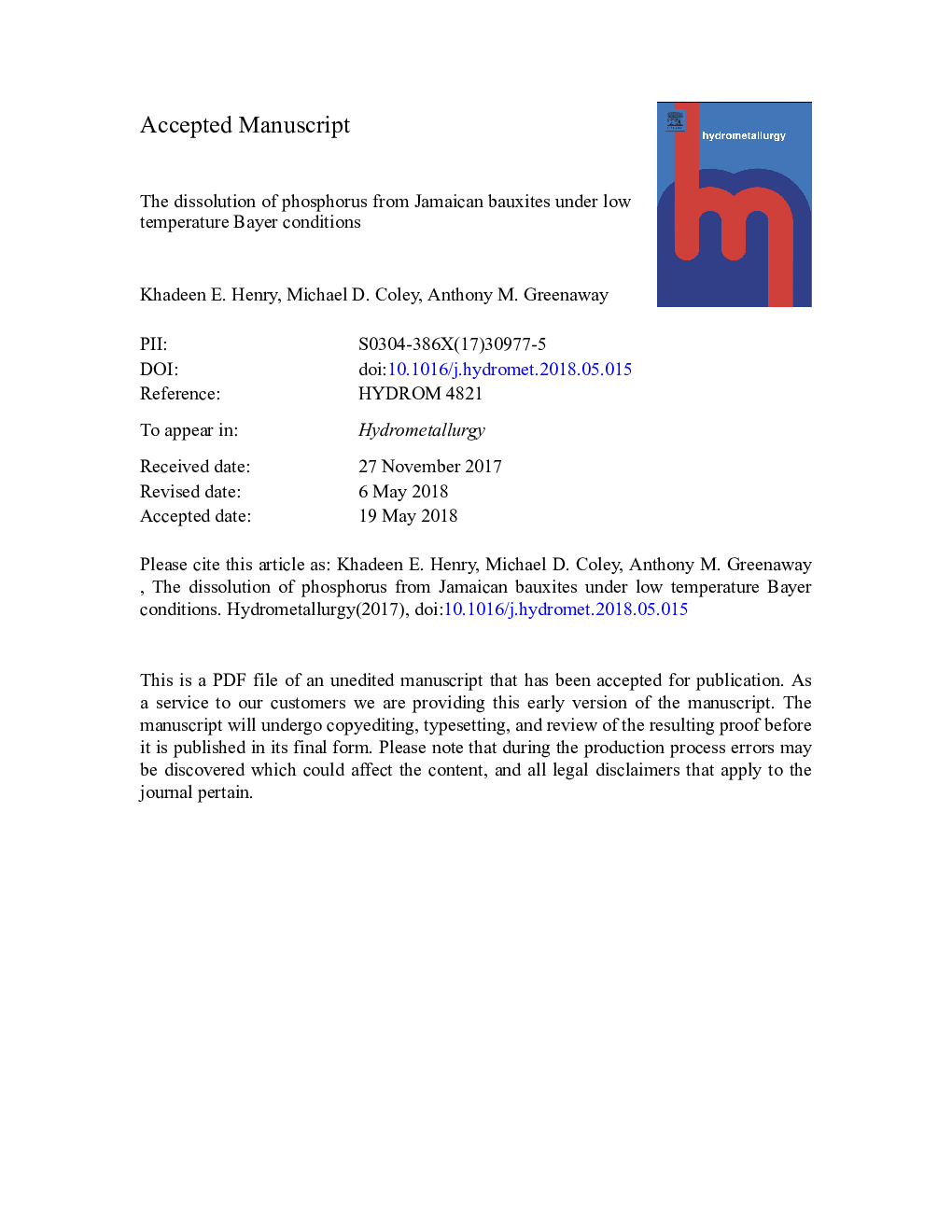| Article ID | Journal | Published Year | Pages | File Type |
|---|---|---|---|---|
| 6658859 | Hydrometallurgy | 2018 | 29 Pages |
Abstract
Jamaica has about 7.1% of world bauxite reserves however the ore characteristics vary significantly depending on mining location and mineralogy. Traditionally, low phosphorus hematite-rich deposits from south central Jamaica are processed in a low temperature alumina refinery but these ores are becoming depleted and will be replaced by high phosphorus goethite-rich resources that are located north of the current mines. Depending on type, P-minerals may dissolve during bauxite digestion, accumulate in the liquor and negatively impact the process. This work compares the caustic extractable PO43â from the traditional and future bauxite mining areas and seeks to develop a model to predict soluble PO43â concentrations from their total phosphorus levels measured via XRF. Filtered liquors from the low temperature caustic digestion of 104 samples from a goethite-rich future-bauxite reserve (0.4-32.8% PO43â) and 30 hematite-rich samples (0.1-1.27% PO43â) from current mines were analyzed for soluble PO43â concentrations using the ascorbic acid molybdenum blue spectrophotometric procedure. The concentrations of PO43â in liquor increased dramatically with processing of the goethite-rich ores (5-21,000â¯mg PO43â/L) in comparison to digestion of the traditional hematite-rich bauxites (52-319â¯mg PO43â/L if one unusual sample is excluded). An empirical equation (mg PO43â/Lâ¯=â¯0.085(mg PO4/kg)â¯+â¯103; R2â¯=â¯0.93) is proposed that uses the total phosphate concentrations of goethite-rich bauxites to predict the soluble PO43â concentrations of their digestion liquors to within ±20% of the measured values. A comparable equation (mg PO43â/Lâ¯=â¯0.082â¯mg PO43â/kg - 26; R2â¯=â¯0.67) to predict caustic soluble phosphorus from the hematite-rich ores was also developed however it has a larger margin of error. The correlations are applicable only to normal bauxite samples from the specific mining areas and with Ca:PO43â ratios of <0.40; they are less effective at higher ratios however as apatite or calcite is often present in such bauxites and results in lower than usual soluble PO43â concentrations. Evaluation of the Ca:PO43â ratios in the bauxites in conjunction with the measured soluble PO43â concentrations confirms that crandallite is the dominant P mineral in both the hematite-rich and goethite-rich bauxites.
Related Topics
Physical Sciences and Engineering
Chemical Engineering
Chemical Engineering (General)
Authors
Khadeen E. Henry, Michael D. Coley, Anthony M. Greenaway,
